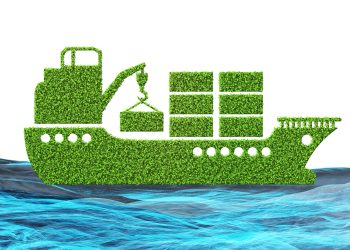The Port of Amsterdam has announced that is contributing to the growing momentum behind the energy transition. As well as accommodating activities that help boost the sustainable and circular economies and creating more physical space, the Port is also investing in new cargo flows and industry.
Driven by sustainability targets and for economic reasons, Port of Amsterdam has begun the transition process toward a more sustainable future, so as to accommodate the port’s further growth. The Port is pursuing a three-pronged policy to facilitate this growth.
The first objective of the strategy is further intensification, with local businesses being challenged to use their land more efficiently and increasing activity per square metre.
Secondly, the Port has been attracting start-ups and scale-ups which ensure diversification and innovation, for the purpose of accelerating the energy transition. Finally, Port of Amsterdam is moving towards scaling back the transhipment of coal. Transhipment volumes already fell by 7.5% to 16 million tonnes in the past year. Transhipment of coal is expected to fall by 29% over the next five years. The transformation in the energy landscape is unmistakable and will result in the phasing-out of coal from the energy mix. The Strategic Plan 2017-2021 therefore states that the Port of Amsterdam works on a scenario in which the Port will be coal-free by 2030.
Port of Amsterdam CEO Koen Overtoom:
‘In pursuing this strategy, we are deliberately and literally making room for the development of new activities and innovations. This is sensible from an economic point of view and more sustainable, as well as promoting employment.’
The storage and transhipment of fossil transport fuels such as petrol and kerosene will initially continue to expand during the transition period. These international cargo flows will remain key activities for Port of Amsterdam as long as no adequate alternatives are available yet in our society.
The manufacturing and circular industries are important for Port of Amsterdam on account of their innovative and value-added nature and the jobs they generate in the area. Companies operating in these industries recently established in the Port include yacht manufacturer Royal van Lent in Moezelhaven; and innovative companies operating in the circular and bio-based industries, such as Calcite Factory, a company which converts softening granules – used in the water-softening process – into products for the chemical, food and animal feed industries, and the Waste2Aromatics project, in which Port of Amsterdam and its partners AEB, Orgaworld, Waternet and the Netherlands Organisation for Applied Scientific Research (TNO) are exploring ways of converting disposable commodities such as paper nappies into valuable molecules which serve as key ingredients in plastics manufacturing.
Port of Amsterdam is also in the process of developing area into the ‘city’s battery’. The port generates heat for the city and is investing heavily in the production and storage of renewable energy. In late 2016, the Port also became the co-owner of a wind farm based in the Afrikahaven area. By 2020, it will be home to a 100,000 square-metre solar array. Coupled with the expected growth in the production of biofuels, this will transform Port of Amsterdam into a large, regional, sustainable energy supplier.
Source & Image credit: Port of Amsterdam


































































